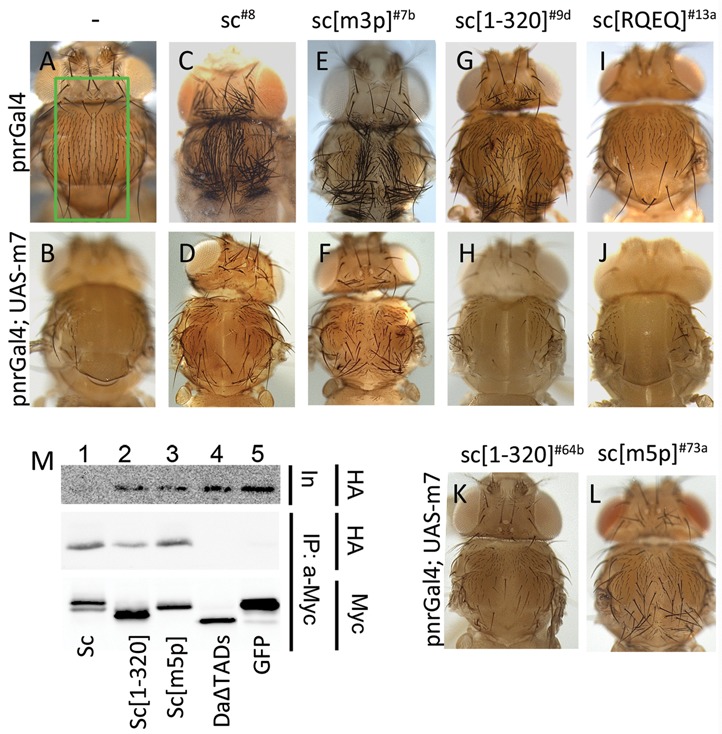Figure 7.

Phosphorylation of Sc in vivo modulates its susceptibility to E(spl) m7 repression. (A, C, E, G, I) Thoraces from pnr-Gal4 flies overexpressing the indicated Sc variants. The pnr expression domain is boxed in panel A. Note the production of ectopic bristles by all Sc variants, except Sc[RQEQ], where mild bristle loss is seen (I). C (UAS-myc-sc8) and E (UAS-myc-sc[m3p]7b) are pharate escapers. G (UAS-myc-sc[1–320]9d) is the only viable line with pnr-Gal4 and I (UAS-myc-sc[RQEQ]13a) is viable, as are all Sc[RQEQ] lines. (B, D, F, H, J) Thoraces from pnr-Gal4 flies overexpressing the indicated Sc variants along with E(spl)m7. m7 strongly inhibits ectopic bristle production, with the exception of panel F, where a large number of bristles persist. (K) pnr-Gal4; UAS-m7. UAS-myc-sc[1–320]64b; line 64b never gives pharate escapers when expressed alone (without m7) and produces many more SOPs in larvae than line 9d (G). Still it is more effectively suppressed by UAS-m7 than Sc[m3p] (F). (L) pnr-Gal4; UAS-m7. UAS-myc-sc[m5p]73a; line 73a never gives pharate escapers when expressed alone (without m7) but is less susceptible than the equally inviable Sc[1–320]64b to m7 overexpression. (M) myc-tagged proteins (as indicated) were expressed and immunoprecipitated from S2 cells. Immunoprecipitation efficiency (Myc, lower panel) and the presence of coprecipitated HA-tagged m7 (HA, middle panel) were assayed. Upper panel shows the levels of the HA-m7 in the cell extracts (input). All Sc variants interact with HA-m7. GFP, the negative control and DaΔTADs (lacks the AD1 and LH domains) do not immunoprecipitate HA-m7.
